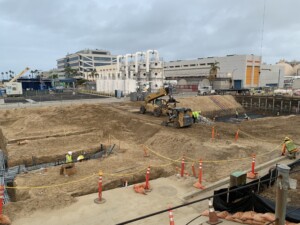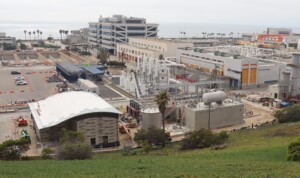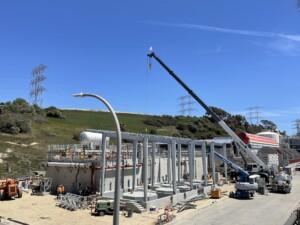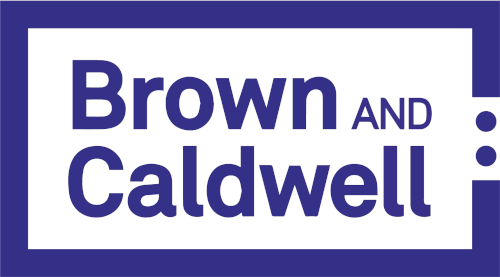Challenge
The Hyperion Water Reclamation Plant (HWRP) is one of the largest water reclamation facilities in the United States, receiving an average of 275 million gallons of wastewater every day. The plant has a maximum daily flow of 450 million gallons per day (mgd) and maximum peak wet weather flow of 800 mgd. Hyperion 2035 is Los Angeles Sanitation and Environment’s (LASAN) vision for recycling 100% of the wastewater. A key early step towards Hyperion 2035 is the construction of the Hyperion Advanced Water Purification Facility (Hyperion AWPF). This project serves as a “proof of concept” for the full conversion of HWRP to a 100% water recycling facility and potential future potable reuse applications. The project will also support diversification of the city’s water portfolio and reduce dependence on imported water.
Approach
LASAN elected to use progressive design-build (PDB) to meet the needs of the project. This collaborative delivery method allows the team to tackle the many complexities of the project, including multiple layers of stakeholder interests; regulations for nonpotable reuse; a tight schedule; and desire of the owner to be involved throughout the design and preconstruction phase, including developing a guaranteed maximum price (GMP) for Phase 2 services, as well as construction and performance validation.
To help create a new, sustainable water supply for Los Angeles and maximize water reuse at HWRP, the Walsh/Brown and Caldwell (BC) design-build team is working with LASAN to construct a 1.5 mgd Hyperion AWPF. The facility will treat primary effluent from HWRP to high-quality, nitrified-denitrified recycled water for various uses at the Los Angeles World Airport (LAWA), including cooling tower make-up water, toilet flushing, irrigation, and other nonpotable uses. The recycled water will also be used at HWRP to offset potable water in its wastewater treatment processes, as well as provide recycled water to existing internal infrastructure.
The new Hyperion AWPF treatment process includes fine screens, membrane bioreactors (MBR), reverse osmosis (RO), ultraviolet irradiation-advanced oxidation (UV-AOP), and post-treatment stabilization. The new facility also consists of multiple pump stations, a chemical facility, a 125,000-gallon product water storage tank, and conveyance infrastructure. The project requires integrating the new Hyperion AWPF into HWRP operations, including primary effluent diversion, waste discharge return, purified water conveyance, electrical power supply, and controls and SCADA integration.
The project team recognized the importance of site investigations early in the project. A significant effort was put forth to discover, identify, and design around existing utilities within the new Hyperion AWPF project limits. This work was completed not only within the building and process footprint, but it extended to the plant fence line to incorporate the proposed conveyance pipeline alignment.
Results
The project team leveraged the PDB delivery method to achieve both cost and schedule savings. Examples include the following:
1. Identifying and evaluating value engineering options, ideas, and concepts to integrate into the project, providing $7 million in savings. This included elevating the RO feed tank from below grade to above grade and reducing product water tank volume.
2. Expediting preparation of a revised draft Basis of Design Report to reflect the new project vision, which was subsequently approved.
3. Conducting a manufacturer preselection process for MBR and UV-AOP vendors to streamline design and cost model development.
4. Selecting equipment early at the 30% design level, which allowed the design to progress for each area in parallel with selection.
One lesson the team learned involved clear lines of responsibility and timely decision-making. The PDB delivery method is a great vehicle to establish and maintain a team environment. With so many responsible parties and stakeholders involved in the project, including, but not limited to, the owner / contract manager, owner advisor, contractor, design engineer, plant operations, and end-user, it can be difficult to understand the decision-making process. With such a complex project, there are many decisions that need to be made throughout design and construction, and the timeliness of those decisions oftentimes has far-reaching impacts. During the design phase, the responsibilities of each member need to be well defined, and decisions need to be made in a timely manner to keep the project on schedule.
The project team successfully reached a GMP at the 70% design completion level and obtained unanimous Board of Public Works approval. Construction started in April 2021 while the design was being finalized. The new facility is anticipated to be fully operational in 2024—moving Los Angeles one step closer to a more self-reliant water future.
“The Hyperion AWPF project represents a key step toward meeting the City’s goal of transforming Los Angeles’ largest water reclamation plant to a 100% water recycling facility. The Walsh/Brown and Caldwell team has been a highly collaborative partner during both design and construction. Their professionals have come to the table with creative solutions to many challenges from site constraints to maintaining existing operations at all times. Together, we have leveraged progressive design-build to integrate new treatment technologies, incorporate continued operations input, provide cost transparency to the City, and meet an aggressive schedule. This team has set the stage for the Hyperion 2035 program.”
— Christina Becerra Jones, PE, Environmental Engineer, LA Sanitation and Environment, Water Recycling Implementation Division





